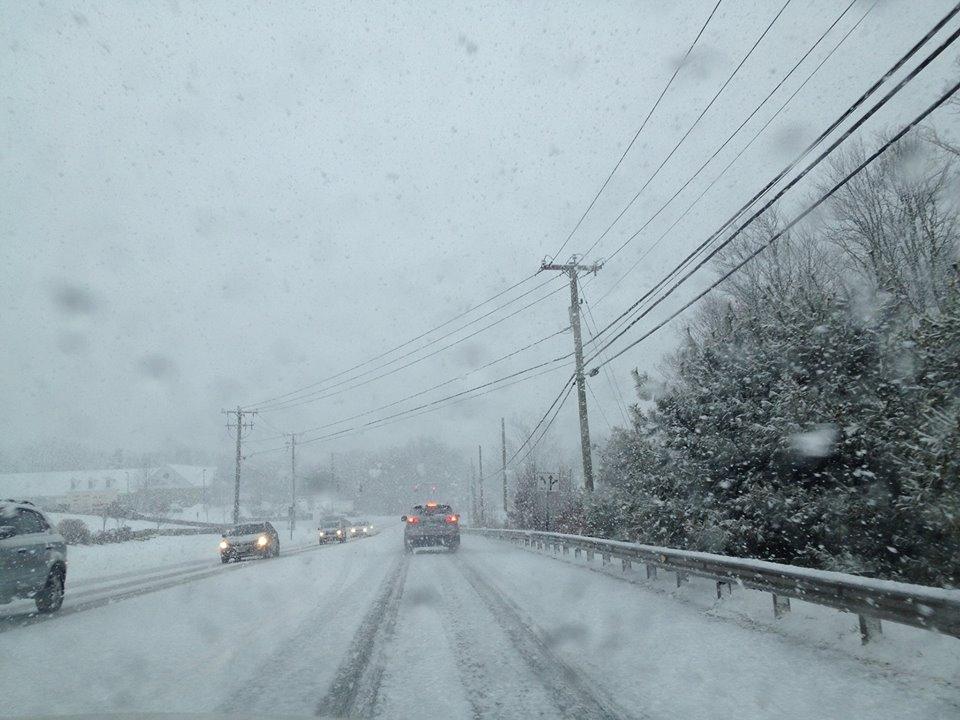Graded’s guide to the Polar Vortex
Having spent my Christmas break enjoying the heat of the Peruvian and Brazilian summer, I didn’t have to suffer through the blistering cold of the “polar vortex.” Nevertheless, I and many of my classmates will be moving to the Northern Hemisphere for college, and I don’t want to have to be thawed when I come home to visit. To prepare for such alarmingly cold weather, I talked to some of Graded’s polar-vortex survivors.
But first, what is the “polar vortex,” and why is it happening? Apparently, a rise in arctic temperatures is behind this cyclone-like weather phenomenon. Normally, air flow keeps the low-pressure cold air in the Arctic and the warmer, high-pressure air in North America. However, since global warming is causing the arctic ice to melt, more energy is being absorbed by the ocean around it, leading to a rise in temperature in the area. This, in turn, decreases the temperature difference between the Arctic and North America. According to Rutgers University Meteorology Professor Jennifer Francis, this makes the polar vortex’s jet streams blow further south than ever before. The effects are obvious, with places like Chicago and Winnipeg experiencing record-breaking low temperatures of −27 °C and −37 °C, respectively.
So how did members of our community survive these extreme temperatures over the holiday? Michigander seniors McKenna Kiiskila, Pooja Singhi, and Jakob Naegeli say that the best thing to do is to stay inside and drink hot beverages. Nabila Mourad, a junior who visited Washington DC, as well as science teacher Adam Cross, who went to Ontario, also agree that staying inside is important. “I just didn’t go outside and did science experiments to stay warm,” says Cross.
Other high schoolers emphasize the importance of wearing proper clothing. As junior Chris Cabrera explains, he had to wear “4 layers of pants, 3 sweaters, a coat, 2 pairs of socks, and 2 pairs of gloves” to go outside in New York. Senior Roberto Fajardo, who visited Nevada, and freshman Harrison Helm, who stayed in Texas, say that warm scarves are a must.
Some Graded students went even further to stay warm. Senior Philip Fama, who spent his break in Connecticut, built fires to fight the cold. His advice for fire-building beginners? “Don’t burn yourself.” Victoria Fernandes, a sophomore who went to Switzerland, took a more active approach by going skiing.
But if you aren’t feeling as active as Fernandes or adventurous as Fama, perhaps you should try senior Adam Fertig’s tip for surviving the polar vortex: staying away from it. As he explains, “I didn’t go to the Northern Hemisphere. It was much more fun to watch my relatives live through the cold from a distance.”
If remaining in the Southern Hemisphere during the next winter break is not an option for you, don’t despair! Though Graded’s polar vortex survivors did find the cold temperatures very harsh at times, they were all still able to enjoy their vacations. Like Fernandes, many students made the best of the snow and played winter sports. “It was cold, but the slopes were nice and empty, so it was good,” Singhi says about her time skiing. Others, such as Mourad, Fajardo and Helm, enjoyed winter strolls as they went sightseeing or visited their families. According to Kiiskila, her favorite part of the winter was the food: “I loved making cookies with my mom.” As for the scientifically-minded, it turns out that cold weather makes for some great experiments. Mr. Cross, for example, had a lot of fun throwing boiling water into the cold air and watching it instantly freeze.
Well, there you have it! How members of the Graded community survived to tell the tales of their wintery adventures. Here’s hoping that the upcoming Southern Hemisphere winter will be a whole lot milder.
Source: businessweek.com

Mariana Lepecki is one of the Editors-in-Chief of the magazine and has been part of the staff for the last three years. In previous years, she has been...






